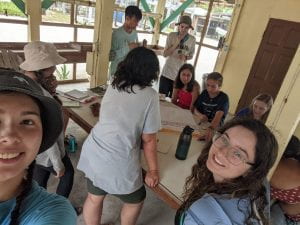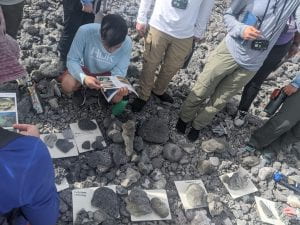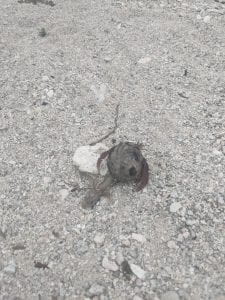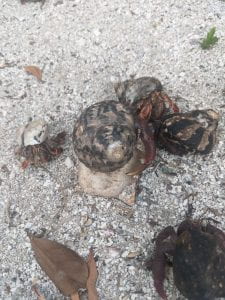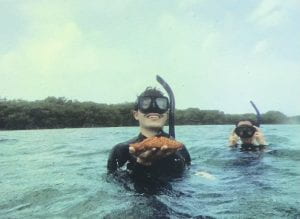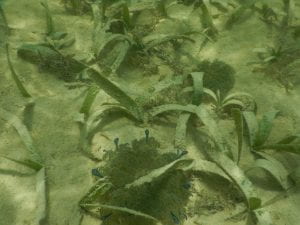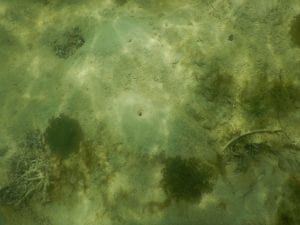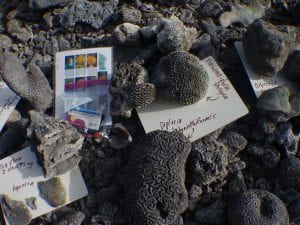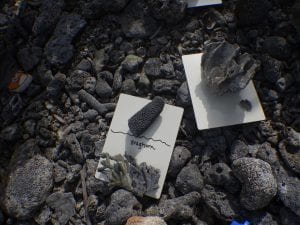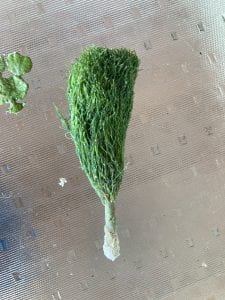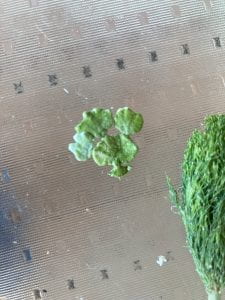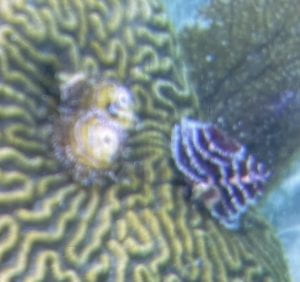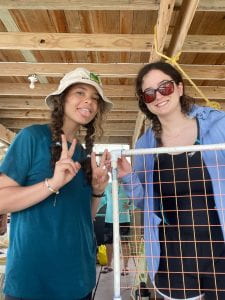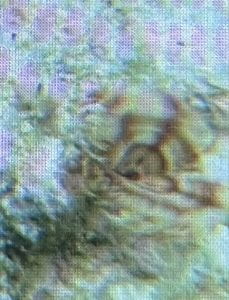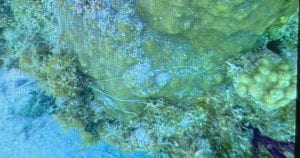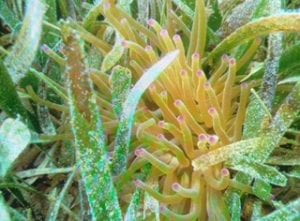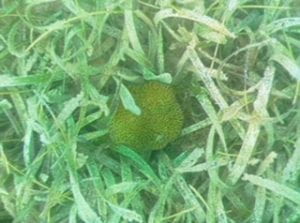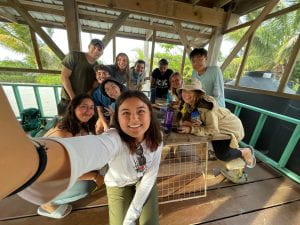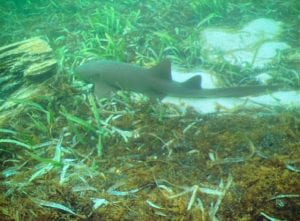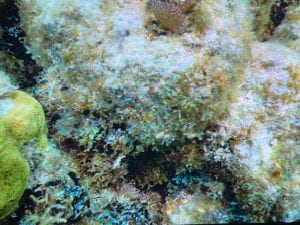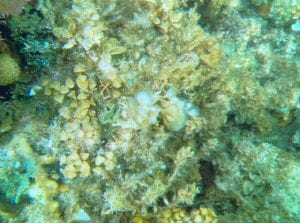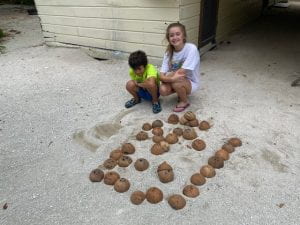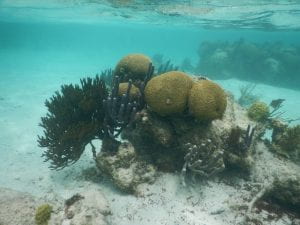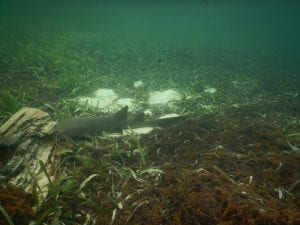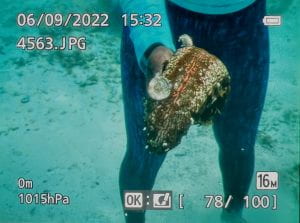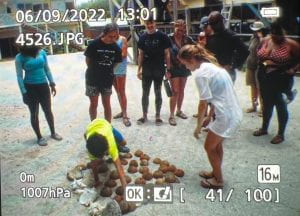Hi y’all, it’s Liliana again.
I am completely exhausted right now so lets hope that I can write something coherent. We started early again at 6:30, and I hate to say it but waking up that early is becoming more normal. We practiced using our transects and quadrants on land before we formed our research question and went out on the water. This time we stuck to the sea grass and swam through it looking for a specific green algae, penicillus. Each group of two with a total of seven groups swam at least 100 feet out, looking to see how many we could find in a 2×4 area every 10 feet, in the end despite all the ground covered we did not find that many. My group only found two, but we found some other exciting stuff instead like an upside down jelly! And more relevant to my taxon we found a crab next to the upside down jelly, but it was very dead and I didn’t want to get close enough to the jelly to see what the crab was. We wrote our findings and made a group poster and presentation about our mini experiment.
After lunch we went to the coral graveyard, which is great for identifying coral species since you can get a really close look at all the parts and how it looks underneath the living tissue.
After that I got to present my lecture on lionfish/invasive reef species, and my years long mission to eat a lionfish, and I hope that this trip will finally be my chance, since there are many lionfish on this reef that need to be removed. Today was interesting in terms of crab behavior.
On my way to the bathroom I spotted this hermit crab dragging a small lizard across the ground into a hole.
We also discovered that the hermit crabs like coconut, they’ve been swarming the area where the children were cracking and eating coconuts.
Anyways, it’s time for me to go to sleep, I am exhausted and need all my rest before tomorrow.

